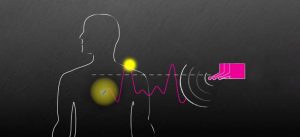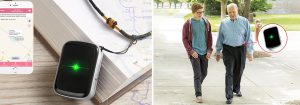
Dedicated to Provision of Long Term Stable Running IoT Devices
- mailbox
 [email protected]
[email protected] - phone
 +86-755-85241929
+86-755-85241929

Dedicated to Provision of Long Term Stable Running IoT Devices
 [email protected]
[email protected]  +86-755-85241929
+86-755-85241929 August 23rd According to the US “Overseas News” report, if you want to find a restaurant, using Google Maps seems to be a good choice. Through the Global Positioning System (Micro GPS Tracker ), Google can accurately determine the location of the restaurant and inform the restaurant of the distance and time required. But what if you apply Micro GPS Tracker this technology to the human body?
According to reports, scientists from the Massachusetts Institute of Technology’s Computer Science and Artificial Intelligence Laboratory have developed an “in-vivo GPS system” called “ReMix,” which uses wireless technology to locate digestible plants in the human body. Into the object. The technology will have great potential to manage certain diseases in the future, such as diseases like cancer, and medical personnel can use this in-vivo Micro GPS Tracker system to accurately locate tumors. The research leader is Professor Katabi of the Massachusetts Institute of Technology.

At present, the method of observation in the human body may be highly invasive, and the doctor has to use a miniature camera to enter the body through a throat or an incision. With “ReMix,” patients can theoretically observe in vivo by ingesting an implant that can be tracked externally. If the implant is attached to a tumor, it will provide the physician with a means to effectively improve the targeted treatment options by Micro GPS Tracker system.
How does “ReMix” perform human positioning? Of course, instead of using a satellite around the Earth, it is primarily positioned using a miniature marker that enters the body through the implant, and the marker itself acts as a reflector to bounce back the radio signal, so it does not require a power source.

However, the main obstacle to detecting these signals from the inside of the human body is that the human body itself, such as the skin, also has a rebound effect on the radio signal. The beauty of “ReMix” is that it can distinguish between powerful interfering signals and accurately find the reflected signals belonging to the markers. According to initial tests, the Micro GPS Tracker system has been able to position markers within 1.4 cm.
The researchers pointed out that the practical application of this Micro GPS Tracker system technology can be seen very quickly, and the error range must be closer to the millimeter to be reliably used in the clinic.